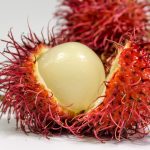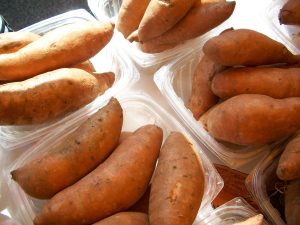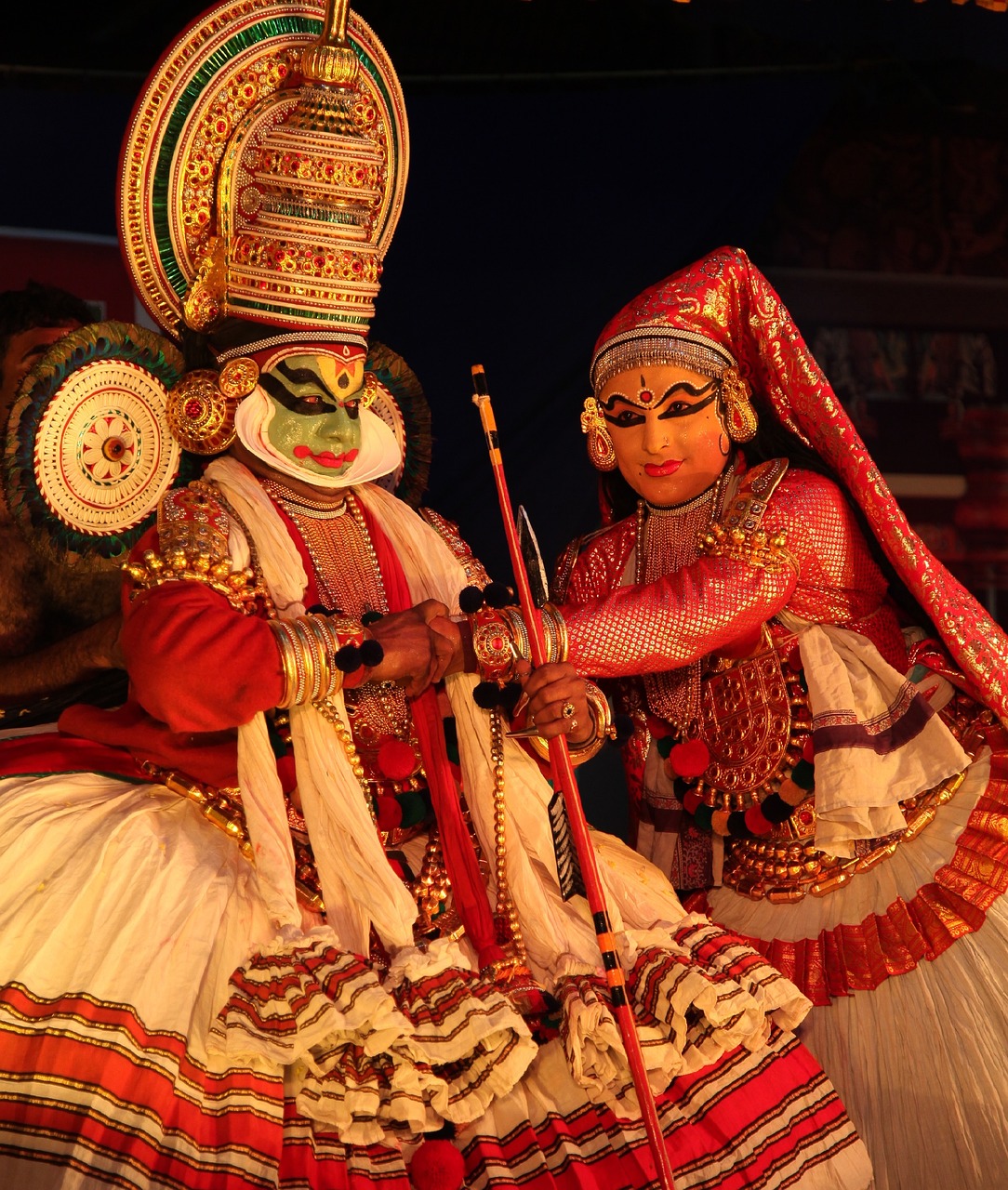
Nestled in the lush landscapes of southern India, Kerala boasts a rich cultural heritage steeped in art, music, and dance. Among its most captivating cultural treasures are the traditional folk dances that reflect the state’s history, mythology, and diverse communities. These dances serve not only as artistic expressions but also as celebrations of life, rituals, and storytelling mediums passed down through generations.
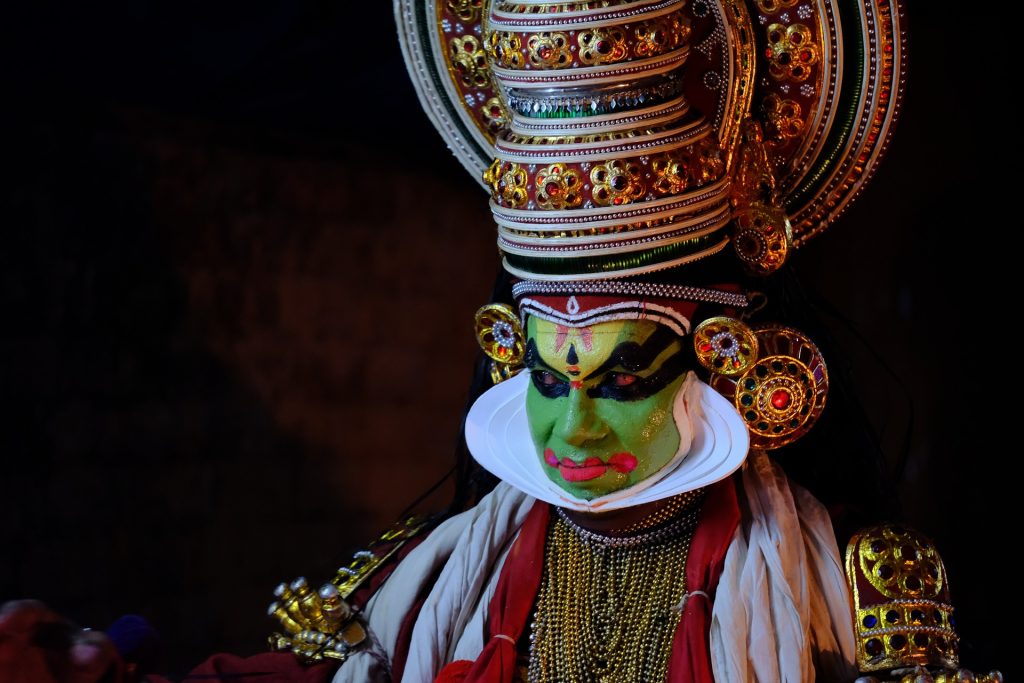
1. Kathakali: The Enigmatic Dance-Drama
Kathakali is one of the most iconic and internationally recognized dance forms from Kerala. This classical dance-drama, characterized by elaborate costumes, intricate facial expressions, and dramatic movements, is a spectacle that combines dance, music, and acting. Performers don vibrant and ornate costumes, often taking hours to adorn their makeup, creating larger-than-life characters from Hindu mythology.
Kathakali narrates tales from the epics of Ramayana, Mahabharata, and other mythological stories, portraying emotions and conflicts through highly stylized movements and expressions. The dancers, through their mudras (hand gestures) and facial expressions, bring alive the essence of the characters they portray, enchanting audiences with their mesmerizing performances.
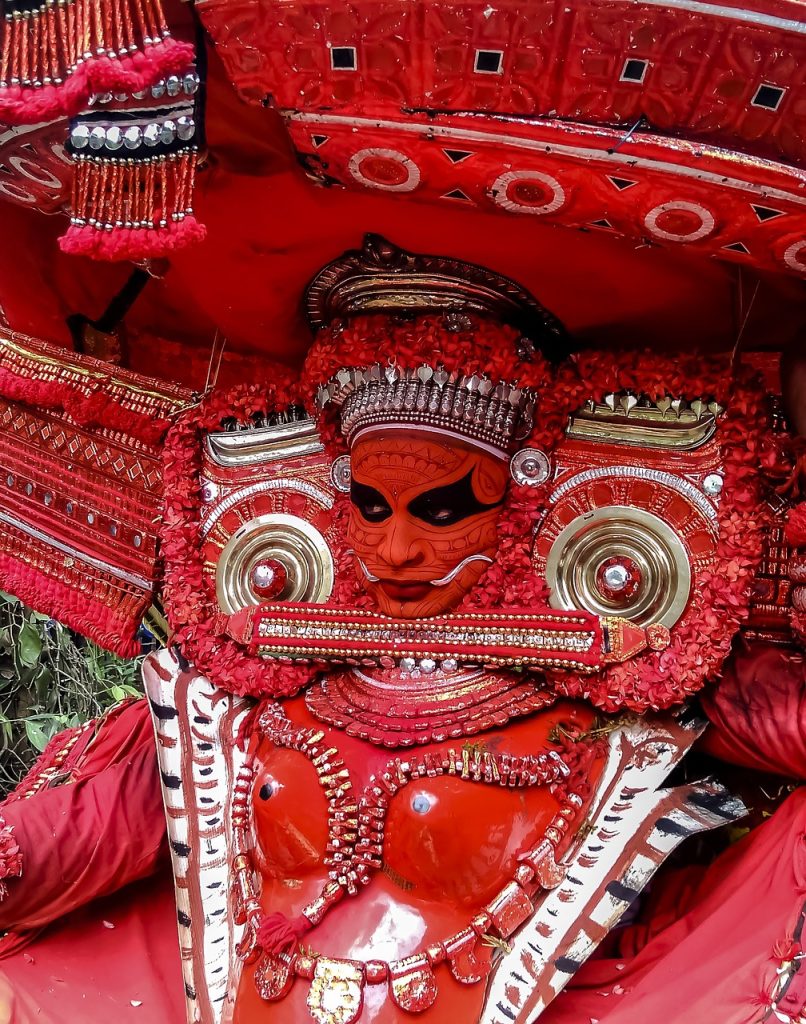
2. Theyyam: The Divine Dance of Gods
Theyyam, a ritualistic dance form deeply rooted in ancient traditions and customs is another captivating folk art from Kerala. It is a sacred performance where artists, known as Theyyam practitioners or performers, embody various deities, spirits, or heroes from folklore. The dancers undergo elaborate rituals and wear elaborate costumes, often characterized by elaborate headdresses and vivid body paintings.
Theyyam is not merely a dance but a religious experience where the performers, in a trance-like state, channel the divine spirits they represent. Through rhythmic movements and invocations, Theyyam ceremonies invoke blessings, seek protection, and celebrate the folklore and beliefs of the region.
3. Mohiniyattam: The Dance of the Enchantress
Mohiniyattam, meaning the dance of the enchantress, is a graceful and elegant classical dance form of Kerala performed predominantly by women. Mohiniyattam is a celebration of femininity and beauty which is known for its lyrical movements, delicate gestures, and fluid body movements,.
This dance form, with its repertoire of swaying movements and subtle expressions, often depicts tales from Hindu mythology and folklore. The dancers add to the charm and allure of the performance by adorning themselves in traditional attire, adorned with intricate jewelry and colorful costumes, .
4. Thiruvathirakali: Celebrating Womanhood through Dance
Thiruvathirakali is a joyful and graceful dance performed by women, typically during festive occasions like Onam and Thiruvathira. Womanhood, unity, and the spirit of togetherness are celebrated by this dance form. Clad in traditional Kerala attire, the dancers form circles and perform synchronized steps, accompanied by rhythmic clapping and singing.
The movements in Thiruvathirakali are simple yet elegant, with a focus on unity and coordination among the dancers. It is a celebration of femininity and solidarity, reflecting the essence of Kerala’s cultural ethos.
Preserving Traditions, Embracing Modernity
Preservation and continuity are the challenges which is faced by these traditional folk dances of Kerala In a rapidly evolving world. Yet, the longevity of these art forms are ensured by the concerted efforts of cultural organizations, educational institutions, and dedicated practitioners. Workshops, festivals, and cultural exchange programs play a vital role in nurturing and promoting these dances both nationally and internationally.
Moreover, modern adaptations and collaborations have helped bring these traditional dances to contemporary platforms, ensuring their relevance among younger audiences while retaining their cultural essence.
In Conclusion
The traditional folk dances of Kerala are not merely performances but living embodiments of the state’s rich cultural heritage. They encapsulate stories, beliefs, and emotions, serving as windows into Kerala’s past, its mythology, and the diversity of its communities.
Through Kathakali’s dramatic portrayals, Theyyam’s spiritual invocations, Mohiniyattam’s gracefulness, and Thiruvathirakali’s celebration of womanhood, these dances continue to captivate audiences worldwide, carrying forward the legacy of Kerala’s vibrant cultural tapestry.
As custodians of these invaluable treasures, it is our collective responsibility to cherish, preserve, and celebrate these traditional folk dances, ensuring that they continue to enchant and inspire generations to come.




